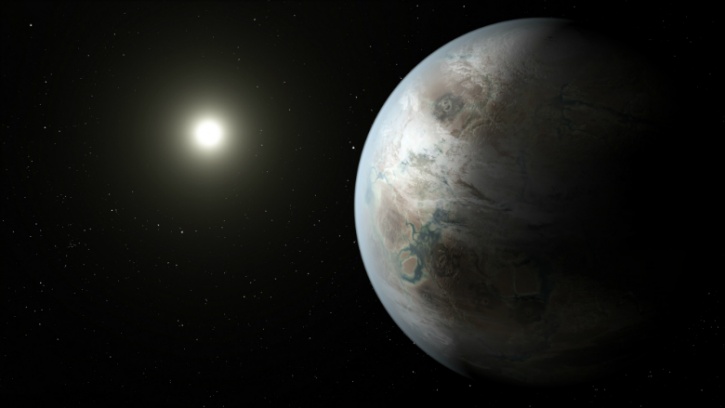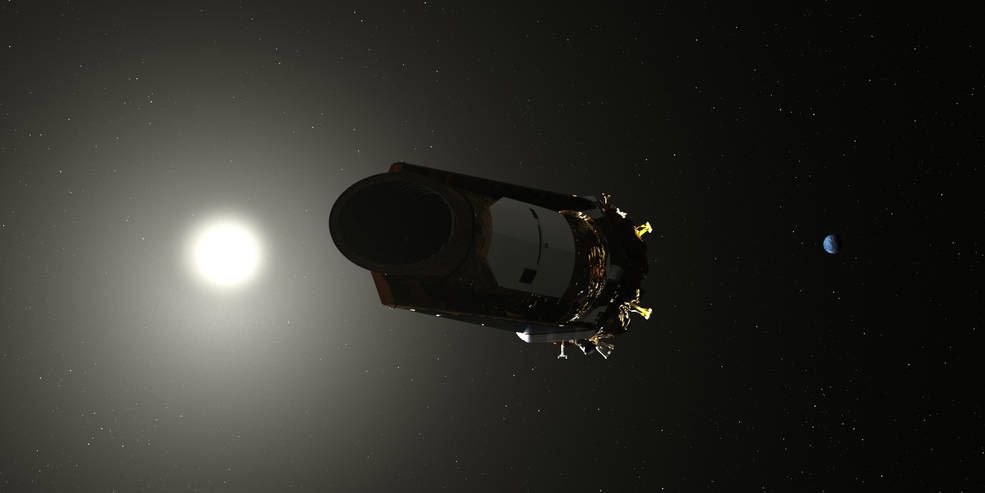

While not as distant, Kepler’s mission is no less profound. Voyager gathered our first detailed knowledge of the outer solar system, and the first views of Earth from the doorstep of interstellar space, some 4 billion miles away. Here are the official versions for several of these looking-back-at-Earth photos: “Earthrise” from the Moon, “Pale Blue Dot” from beyond Pluto, “The Day the Earth Smiled” from Saturn, The Evening Star from Mars, Earth and Moon from Mars. Similar images have now been taken from many NASA missions, including a stunning mosaic from Saturn, and Earth as the “Evening Star” from the surface of Mars. The entirety of humanity becomes reduced to a fading speck as Voyager leaves our Solar System. This picture shows the Earth as nothing more than a faint dot, a single pixel in an image. For me, the “Pale Blue Dot” image taken from Voyager 1 strikes the deepest chord. These pictures can reach iconic status - TIME magazine rates “Earthrise” as one of the 100 most influential images of all time, for example. Taking photos of the Earth using far-flung spacecraft has become something of a tradition for NASA. The grand image will then be snapped on Dec 10, but the data won’t be downloaded for another couple months as K2 continues to study the stars in this field as part of normal operations. A small strip of pixels will gather brightness measurements as the Earth rotates, which we hope to use as a training set for studying the rotation of planets around other stars. Leading up to the Dec 10 photo, Kepler/K2 will track the Earth as it moves towards the edge of the field of view. On Dec 10, the Earth and Moon should both be visible within the field of view, and will likely be a bit brighter than Mars. You can see the “Ghost of Mars” from Kepler here. Interestingly, a lens-flare-like property of the Kepler optics for bright objects means there will also be a “ghost” image of the Earth, reflected across the field of view. To get an idea of what Earth will look like in Kepler’s field of view, here is an image Kepler captured of Mars earlier in 2017 (in Campaign 12). The picture from Kepler will not show high levels of detail of the Earth’s surface.


In this orientation the Earth is visible by Kepler for a few days, and gives us the chance to capture this picture of our home from a distant vantage point. This is usually done (as in Campaign 9) to search for “microlensing” signals, or to overlap with a previously studied field (as in the upcoming Campaign 16). However, occasionally the telescope is oriented “forward” in the direction of the Earth’s orbit. From this viewpoint, the K2 mission has studied over 200,000 stars, more than doubling the original Kepler sample, spotted asteroids whizzing past, tracked the orbits of the moons of Neptune, and discovered hundreds of new extrasolar planets. In the normal K2 program, the telescope looks “behind”, i.e. The Kepler spacecraft is in an “Earth trailing” orbit, traveling around the Sun slightly slower than the Earth, and therefore constantly drifting away from us. While this new mission, called K2, was a loss for people studying years-long planet orbits, it opened many new doors. Importantly, the new fields are all spaced along the ecliptic plane. Using a combination of thrusters and the solar wind, the spacecraft is kept nearly as stable as in the original mission, but can only hold its position steady for about 80 days at a time. The folks at Ball Aerospace (who built Kepler) and NASA devised a clever extended-life mission: point the telescope at multiple fields for shorter spans of time. However, this mission ended in 2013 when 2 of the 4 onboard reaction wheels failed (one was a spare), and the telescope could no longer be pointed with precision at the Kepler field. To do this, the spacecraft required total control over its orientation in 3-dimensions, like an airplane’s pitch, roll, and yaw. Originally Kepler pointed for over 4 years at a single field, a region visible in the Northern hemisphere during the summer near Vega. As a result, the image quality is not “beautiful” like we’re used to seeing from missions like Hubble, but the time-series data used for transit searches is exquisite.

Everything about the facility was engineered around that single goal: the field of view is very wide to survey as many stars as possible, the camera takes fairly long exposures (usually 30-min), the pixels are large (a low-res image), and it stares at the same field continuously so the scene doesn’t change. Kepler is about the size of a pickup truck, and was designed to find planets orbiting around other stars using the “transit method”.


 0 kommentar(er)
0 kommentar(er)
